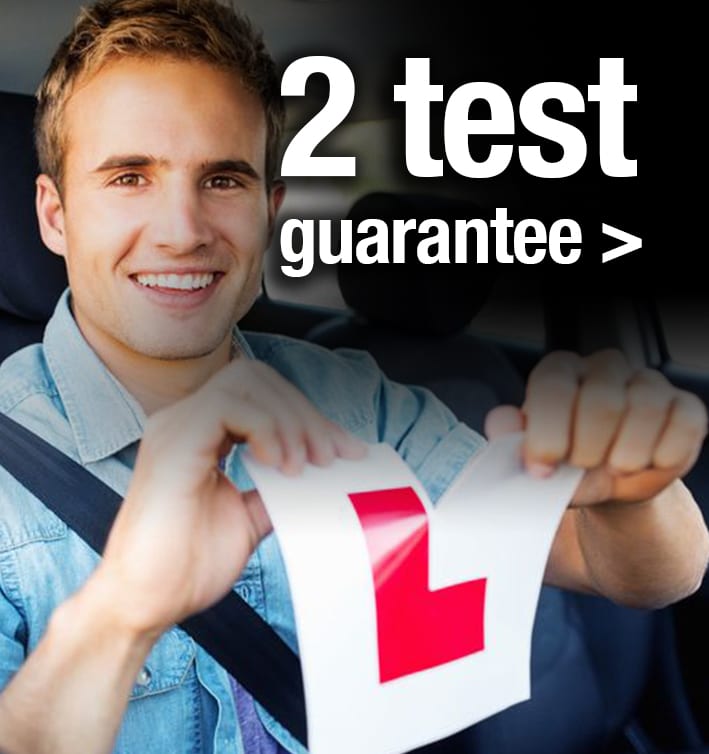Road Safety Minister Baroness Vere of Norbiton is proposing a number of changes to the driving training industry and has asked the public to give their views on the suggested amendments. Some of the proposals affect how we at BIG TOM Driving School run our driving school. We are an organisation that has been in existence since 2009 and prides itself on adapting our services to provide the maximum customer service experience that we can. We have incorporated customer surveys into our processes that interact with customers for several years and intend to improve continually. As a result of this customer feedback that we have received, we have our reservations regarding some of the proposals being made. We would like to share our views with you, our customers and potential customers and encourage you to engage in the consultation process. If the public does not express their concerns at this consultation phase, the worry is that the changes are introduced automatically.
The proposals are being itemised below for clarity, with a summary of the views held supporting the proposal and then our advice.
The consultation is referred to as:
“Driving tests: improving availability and processes”. The reason given for putting forward the proposed changes is because we are experiencing the “highest demand we’ve ever known for driving tests”.
This is an interesting statement to make because here at BIG TOM, we monitor the availability of driving tests very carefully. It is a necessary action that we take on behalf of our customers (from feedback received from them), and we like to do it to the best of our availability. We currently use four driving test centres across the UK in Lincolnshire and Cambridgeshire, and at the time of writing (26/01/2022) there are seven driving test slots available tomorrow at Lincoln, eight on the 28th and one on Saturday the 29th. Over in Grantham driving test centre, next week there are two driving test slots available for 01/02/22, five available on the 2nd and one available on the 4th. It has simply not been our experience to struggle to find driving test slots, and we would invite readers to browse through our Twitter feed [@BigTomAdmin] to see evidence of this fact for several months now. The exception to this has been Peterborough – for reasons not being given to us at BIG TOM; the DVSA refuses to tell us why there is meagre driving test availability at Peterborough. Of all the driving test centres we use, Peterborough has the most examiners working there, it typically conducts the highest volume of driving tests annually, but for some reason, it is extraordinarily difficult to locate a driving test slot in Peterborough. From first-hand experience and communications with Peterborough driving instructors, we know that many Peterborough residents are taking driving tests in test centres outside of their city.
The consultation document goes on to give three main reasons why there is extraordinary demand for driving tests:
- Covid restrictions
- Learner drivers booking driving tests earlier than they normally would because of long waiting times for tests (the fact that we here at BIG TOM would refute).
- The pass rate for driving tests is less than half and so learners will often take more than one test. We don’t agree with this third “reason” for there now being the highest demand for tests ever. That national pass rate of about 50% (or just under) has been the case for several years running – in fact, if anything, as the data in the report goes on to show, the driving test pass rate for the last 2 “Covid” years is 5% UP on the previous years. So we feel that it is disingenuous to suggest that demand for tests CURRENTLY is at a high due to the national pass rate.
What this means is two of the three reasons offered for the exceptionally high demand for driving tests are at the very least debatable. While we wouldn’t deny for a moment that lockdowns inevitably increase demand, it can be seen from our experience across three of four driving test centres that driving test availability has already been very good for quite some time. Which would then beg the question, what is the actual reason(s) for these changes?
Still within the section of the document for “Why we’ve put these proposals forward” is the following statement:
“Many driving instructors tell us that some learner drivers want to pass their driving test as quickly and cheaply as possible. They say they are unable to stop their pupils from booking a test before they are ready”.
Given that this remark above is one of the reasons for the proposals, again, we would question the integrity of the timing. For decades, it has been a known fact within the driving training industry that learners want to pass their driving test as quickly and cheaply as possible.
Consider for a moment suggesting anything other than that. Would you ever consider saying to a driving instructor, “I’d like to learn to drive with you please. I’ve got absolutely no interest in how long it takes, or even in how expensive this will be for me. The efficiency of the learning process is of no interest to me at all. I would be perfectly happy if having driving training with you went on for 1, 2 or even 3 years, and regarding cost, no problem, I will just keep on paying for driving lessons no matter how this goes”? A preposterous suggestion. People learning to drive want the freedom and independence it gives them; in general terms, the quicker that arrives for them, the better. And customers do recognise value when they see it; they get demotivated, bored, and lose hope when the driving lessons are being stretched out because the learning content is so low per session.
Even with the proposed changes that we will go into in a moment, if a pupil thinks that they are ready to be taking a driving test, against the wishes of their instructor, they inevitably will do one of two things:
They will go and find a driving instructor who will take them for a driving test OR
They will go and take a driving test in their own car
Either way, it is highly dubious to suggest that the changes in this document will result in learner drivers CEASING to want to get their full driving licence as soon as it is safely practical.
The six proposals
- To encourage learner drivers to be better prepared for a test, the intention is to make them wait a month if they fail their test before they have another go, rather than the current ten days. According to the report, learners are “less likely to attempt the test if they know they have to wait longer to rebook after failing”. There is no evidence/data to back up that comment. The sentence starts “We think making this change…”. It seems ambiguous to us here at BIG TOM. The suggestion is that the average pupil will deny the opportunity of getting their full driving licence because should they fail, they have to wait 28 days. The prospect of failing being apparently given more weight in the pupil’s mind than the potential of passing. It begs the question, why not 56 days, why not 84 days? What evidence is behind this change other than the obvious one of increased scarcity? There would presumably come a period where the scarcity of the test provision is so great that the pressure it induces in a learner taking a driving test, actually causes the test fail. This theme of increasing scarcity crops up often in this report.
- Reducing wasted test appointments. If a pupil wants to cancel or postpone their driving test they currently have to give three working days notice, and the proposal is to increase that to ten working days.
- Collect better data about how well driving instructors prepare learner drivers. Currently, a driving instructor does not have to display their unique green badge at the time of a driving test. The DVSA are now proposing to make that a requirement. This would mean that the results of driving tests can be monitored by the DVSA – an exercise they have attempted to do for years with questionable accuracy. Perhaps it would be worth just reminding ourselves why this document has been created; it is because the DVSA is experiencing the highest demand of driving tests ever. The DVSA now appears to be connecting high demand of tests and pass rates.
Just to be crystal clear, prior to the pandemic, the national average pass rate of about 50% appeared to be acceptable to the DVSA in terms of value to customers and safety standards. But now, due to the increased demand of tests brought on by not providing any driving tests throughout lockdowns, now, the national average pass rate of 50% is not acceptable. Interestingly the report states:
“Our driving examiners tell us that some driving instructors may remove their certificate if they’re less confident that the learner driver will pass the test”. This is a remarkable statement to even make given it’s complete lack of corroboration. Although the reason for the behaviour appears to be owned by driving instructors, the source of the fact appears to be coming from driving examiners.
So it seems now that driving examiners are giving their opinion of why “some” driving instructors [suitably vague], remove their green badge. Unless the responsibility for the actions of driving instructors and how they run their business is now being handed over entirely to the regulatory body, is it not the right of the driving instructor to offer their own opinion for their actions rather than have them second guessed by “our driving examiners”. But there is more behind this third proposal than the above.
The displaying of the green badge on a test, means that the regulatory body can then hold instructors to account for data measures that the regulator chooses. As is often the way, it all comes down to what metrics are being measured. Proposal 4 will expand on this subject. Just remember that whenever a regulator/governing body starts to hold people to account for metrics, then inevitably, standards fall, and that is because IT ALL becomes about the metric being measured. For example, if the regulator holds driving instructors to account for driving test pass rates, then you can be sure that driving test pass rates will soar. But that will come at an expense and three possible consequences for you as the consumer to consider is:
What effect will that have on the training standards? Will it all become about ensuring pupils pass driving tests rather than developing safe, competent, confident drivers with a thorough training programme that has breadth and depth? The dumbing-down effect.
What about the poor pupils who genuinely struggle with learning to drive and passing driving tests? These pupils may not find it straightforward to pass a driving test for many reasons. They could be marginalised, even avoided when it becomes apparent that there are anxiety, learning difficulties, or hand/feet coordination issues.
If instructors will only present pupils who they are confident for passing tests, at what expense will this come to the pupil to be at that higher standard?
The report actually states:
“We think that this will encourage more driving instructors who do not display their certificate to only bring people for their driving test if they’re confident they are ready to safely drive on their own”. What amount of extra driving lessons and, therefore, expense will pupils have to bear for their driving instructor to finally reach THAT level of confidence of a guaranteed pass?
4. Give better information to customers about driving instructors. And the DVSA are proposing that “better information” centres around the pass rate of an instructor, and how many faults on average their pupils make on a test. Interestingly, they offer no evidence that suggests why this is deemed to be better information for customers. We at BIG TOM have long held the view that customers should be offered data on a driving instructor’s safety record while training. They should be given data of how long on average a customer takes with the instructor to pass a driving test: both in terms of the number of training hours and quite literally how many weeks/months on average it takes to pass. There should be a satisfaction level that all customers give, and this measure should be quantifiable and qualifiable.
We say this because our customers have told us over the years. This is precisely why we have continued to evolve the processes we adopt to provide the best customer experience that we can – aligned to our customers’ views rather than the regulator. Customers should have the freedom to decide what performance measures matter to them, not have them decided for them by a regulator. The kind of performance measures mentioned above that BIG TOM recommends are centred around a customer’s needs. Contrast them with the regulator’s proposal of showing how many faults per test the average pupil commits. Our values are centred around creating enjoyable, efficient, meaningful driving training sessions that are SAFE. The regulator’s values appear to be centred around how many faults are committed on a driving test. Having customers pass driving tests is important, just as how long it takes is important, but the number of faults committed per test e.g. 3 faults per test, 5.5 faults per test, 12 faults per test? Does a customer care about that metric?
5.Making it easier to check eyesight on driving tests. The report proposes this change so that more tests can be provided over a longer working day where light levels change.
6.Replacing paper test pass certificates with digital.
In summary
Here at BIG TOM, we have very serious doubts about these proposals. We don’t say this through fear of higher standards, far from it.
At the time of writing, since 01/10/2021 the test pass rate is 71%, the average faults per test is 4.4, there are on average 0.29 serious faults per test and there has been one physical intervention on a test. So in terms of the proposed metrics, these figures would exceed the regulatory expectations. No, we strongly feel this is an ill-thought-out proposal because we reject the premise in which it states it has been created for.
Learning to drive is a precious opportunity for people, and we do not feel that the opportunity should be reduced for the reasons given in the report.
The regulator is not just making it more difficult to take driving tests, it is proposing changes that could drastically affect the QUALITY of the training provision if driving instructors go the way of school teachers responding to OFSTED and the training environment becomes testcentric. Remember, this is not about improvements to road safety statistics, this is all about reducing the demand for driving tests. And spare a thought for the poor pupils who find learning to drive a real struggle and how they may be side-lined with these proposals. This is something here at BIG TOM, that we do not want to see.
Unfortunately for future pupils who want to learn to drive, the fact is that the regulator for driving training also happens to be the sole provider of driving test provision. And that is what is at the heart of this report.
We invite you to look through the report carefully when considering your answers. We would recommend that you ponder on who this proposed change is going to benefit? Often, we believe that the changes benefit the sole provider of driving tests in the UK, and we all know how unhealthy monopolies in commerce are.



